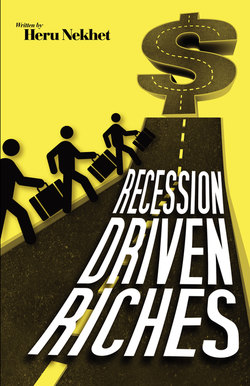Читать книгу Recession Driven Riches - Heru Nekhet - Страница 7
На сайте Литреса книга снята с продажи.
ОглавлениеHow Was This Economic Disaster Created?
“How do we know when irrational exuberance has unduly escalated asset values, which then become subject to unexpected and prolonged contractions?” - Alan Greenspan, 1966
“At the base, this is about excessive government credit, encouraging people to be greedy and excessive in their consumption and investments, masking risk (by not punishing risk sufficiently). We are, in a sense, being punished for our excesses, and we are reverting to the mean after past excesses.” - Adrian Day
The very nature of a free market economy dictates constant fluctuation in the market. This periodic fluctuation in market activity is based upon levels of employment, cost of goods and services, availability of low interest capital (credit, loans, mortgages, etc.), and levels of production. Inevitably, an economy reaches its full capacity, and, with little free capital and no new demand, the process reverses itself and contraction follows. Periods of prosperity (booms, bubbles) are eventually followed by economic crises (stock-market crashes, bankruptcies, unemployment, etc.). Some economists have identified recurring eight to ten year cycles in market economies.
The above information might seem intimidating, and by now you might be thinking you need to be a brilliant mathematician or economist to understand how to hang on to your life savings and build yourself a nest egg so you can retire. I promise that you will one hundred percent relate to and fully understand how the cycles of the economy work because in the most simplistic of terms, using recent events in our history, I will show you the rhythm of the economy and how people find themselves both influencing and influenced by the economy.
Greed and Fear Create Bubbles and Recessions
It is critical to realize that it is the emotional state of the players in the market (buyers and sellers) that create bubbles and their inevitable bursts. How did we get into such a quagmire with our economy? The simple answer is pure greed, but that wouldn’t adequately sum it up. The market is driven by two emotions; fear and greed. During boom times, greed or the prospect of making outrageous sums of money at little risk, drives investors to invest, lenders to lend, business owners to expand and consumers to spend recklessly. Unfortunately, it also lures the unskilled and unknowledgeable into the game as well. The prospect of easy money makes people and institutions take chances on things they clearly don’t understand.
Our economic disaster started out back in 1994 like a scene from a stereotypical Hollywood movie about greedy bankers. In 1994, a team of JP Morgan bankers was having what they call one of their “Off-Site Weekends.” Typically these are yacht parties, with bikini models, and $1,000 bottles of Cristal; and this trip wasn’t much different at the Boca Raton Resort & Club in Florida. The difference was, as they were holed up for most of the weekend in a conference room at the pink, Spanish-style resort, these JPMorgan bankers were brainstorming how to free up their capital reserves and still be able to lend tens of billions of dollars while skirting the current banking regulations. By the mid 1990s, JPMorgan’s books were loaded with tens of billions of dollars in loans to corporations and foreign governments, and by federal law it had to keep huge amounts of capital in reserve in case any of them went bad. They pondered how they could create a device that would protect them if those loans defaulted, and free up that capital at the same time so they could lend even more – Greed!
What those hard partying bankers came up with was a sort of insurance policy where a third party would assume the risk of the debt going bad, and in exchange would receive regular payments from the bank, similar to insurance premiums. JPMorgan would then get to remove the risk from its books and free up the reserves. The scheme was called a “credit default swap,” and it was a twist on something bankers had been doing for a while to hedge against fluctuations in interest rates and commodity prices.
The difference between this new concept and what bankers had done in the past was, JPMorgan hired young math and science grads from schools like MIT and Cambridge to create a new market for these complex instruments. In 1997, the credit default swap (CDS) was launched and quickly became the hot financial instrument, and the “safest” way to mitigate risk while maintaining a steady return. There are very few people on the planet that can tell you exactly how a CDS works, yet they were being gobbled up like hot cakes by foreign nations, major US corporations, hedge funds, pension funds and anyone with big money looking for an easy return. By 2007 it is estimated that the CDS market grew to more than $45 trillion – Greed!
When the economy took a downturn and many of the loans that the CDS’s were created to cover went bad, the banks didn’t have the cash reserves to cover them and it started the domino effect of failing financial institutions. AIG became the best known casualty to CDS’s having to be bailed out by US tax dollars after it defaulted on $14 billion worth of credit default swaps it had made to investment banks, insurance companies and dozens of other entities.
